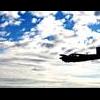Portable Oxygen Placement
-
Members Online
- redbaron1982
- jetdriven
- Skates97
- neilpilot
- Bolter
- TCC
- mooneydemi
- ElkoRandy20J
- GMBrown
- 00-Negative
- 802flyer
- M20S Driver
- dkkim73
- Parker_Woodruff
- chiBranda22
- N201MKTurbo
- MB65E
- Fly Boomer
- bradp
- gggmooneynut
- clh
- Immelman
- sdmideas
- Marc_B
- DCarlton
- Mooney-TN
- Greg Ellis
- 231DF
- 1980Mooney
- 885EW
- Andy95W
- MattCW
- PT20J
- Derek
- MooneyMitch
- donkaye
- crustymuffin
- Igor_U
- Taz
- rahill
- JustusSJ
- dzeleski
- Brandon t


Recommended Posts
Join the conversation
You can post now and register later. If you have an account, sign in now to post with your account.